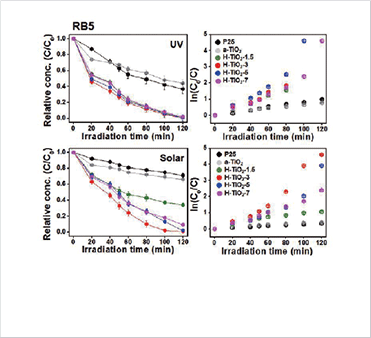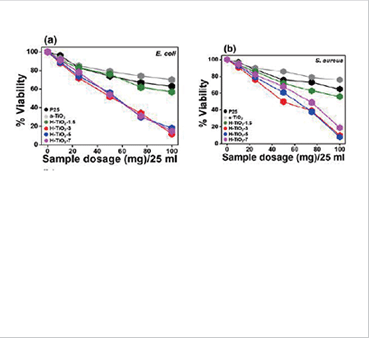Representative Research Publications
Development of eco-friendly photocatalysts with high solar-light reactivity by underwater discharge 2017 > Representative Research Publications > Research Results Home
Nanoporous hydrogenated TiO2 photocatalysts generated by underwater discharge plasma treatment for solar photocatalytic applications
- Journal : Applied Catalysis B: Environmental (2017. 08.)
Authors
An HR (1st author, KBSI), Park SY (1st author, KBSI), Huh JY (NFRI), Lee YC (Gachon Univ), Lee YB (KBSI), Hong YC (NFRI)
Abstract
TiO2 is one of the semiconductor photocatalyst materials that reacts to light and affects the reaction rate in specific reactions. However, there are problems such as low specific surface area, low efficiency, and high cost, and extant research has focused on the more efficient use of TiO2. In this study, TiO2 with high crystallinity and porous structure was fabricated by using a rapid and simple underwater plasma technology without additional heat treatment, so that eco-friendly materials capable of absorbing visible light were designed and controlled. As a result, it was found that the photocatalytic efficiencies of H-TiO2 are approximately five times those of the untreated TiO2.
Expected Contribution to Science & Technology
It is significant that eco-friendly TiO2 photocatalysts with high crystallinity and porous structure were mass produced using a single process of underwater discharge plasma treatment at room temperature and atmospheric pressure. To effectively utilize the solar light in the field of water purification, it is very important to effectively decompose the organic contaminants under visible light irradiation. Consequently, TiO2 photocatalysts showed highly efficient degradation performances and excellent efficiencies for disinfection of E. coli and S. aureus under solar light irradiation. We believe that the development of underwater plasma systems based on TiO2 photocatalysts holds excellent promise for environmental and antibacterial applications.
 Removal of various dyes (RB 5, Rho B, Ph) by H-TiO2 photocatalysts
Removal of various dyes (RB 5, Rho B, Ph) by H-TiO2 photocatalysts
 Plots of cell viability versus solar light irradiation time for H-TiO2 photocatalysts against (a) E. coli and (b) S. aureus
Plots of cell viability versus solar light irradiation time for H-TiO2 photocatalysts against (a) E. coli and (b) S. aureus



